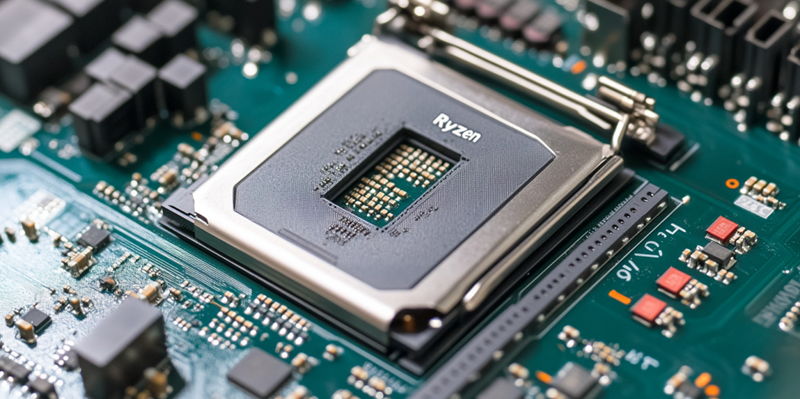Gigabyte’s recent leak of AMD’s Ryzen 9800X3D CPU and the unveiling of a new ‘X3D turbo mode’ feature for its AM5 motherboards are stirring significant interest among gamers and tech enthusiasts alike. This new feature promises to enhance performance, particularly for the 3D V-Cache chips and other Ryzen processors, simply through a BIOS update. According to the leaked information, this X3D turbo mode can boost gaming performance by up to 5%. Specific uplift metrics for popular games such as Tomb Raider, Horizon Zero Dawn, and Far Cry 6 are provided, with improvements ranging from 3.5% to 5%. However, the details of the PC configurations or settings used for these comparisons were not disclosed, limiting the full scope of understanding.
Gamers Rejoice: A One-Click Boost
Gigabyte’s revelation highlights the simplicity and accessibility of the X3D turbo mode, which can be activated with just one click via the BIOS. This feature is not limited to the new 9800X3D processor but extends to previous generations of X3D chips, as well as standard Ryzen processors. For gamers using any Ryzen CPU within a Gigabyte AM5 motherboard, this means they can gain performance improvements effortlessly. The concept of a single-click overclocking feature is not entirely new, but integrating it directly within the BIOS for existing and upcoming processors showcases Gigabyte’s commitment to user convenience and performance optimization.
Despite the initial excitement and anticipation, the actual performance boosts, though modest, are still significant. Earlier leaks suggested that the performance gains could be much higher, potentially up to 35%, but the current data indicates more realistic improvements. These earlier estimates might have included additional enhancements, such as EXPO memory overclocking along with the turbo mode, hinting at potential cumulative benefits from multiple features working in unison. For gamers, even a modest boost can translate into smoother gameplay and better responsiveness in fast-paced scenarios.
Delving Into The Mechanics
The turbo mode’s effectiveness reportedly stems from its ability to disable SMT (Simultaneous Multi-Threading), which in turn optimizes power usage and core distribution to benefit gaming performance. However, this optimization for gaming can come at a cost. Disabling SMT could reduce performance in general applications, particularly those that are demanding but not gaming-related. This makes it crucial for users to selectively activate the turbo mode during gaming sessions and deactivate it when engaging in other tasks. The balancing act between maximizing gaming performance and maintaining overall system versatility is a key consideration with this feature.
If the leaks hold true, the Ryzen 9800X3D is expected to provide an 8% gaming performance boost over its predecessor, the 7800X3D, making the gains from the turbo mode additional to these improvements. The applicability of the turbo mode to older chips is particularly noteworthy, as it suggests that users of previous Ryzen generations may also see some performance benefit, albeit to a potentially lesser degree. The cumulative effect of these incremental yet meaningful performance boosts reinforces the value proposition of Gigabyte’s innovative approach to CPU gaming enhancements.
Practical Considerations and Conclusion
Gigabyte’s recent leak of AMD’s Ryzen 9800X3D CPU and the introduction of a new ‘X3D turbo mode’ feature for its AM5 motherboards are generating significant buzz among gamers and tech enthusiasts. This innovative feature, aimed at boosting performance for 3D V-Cache chips and other Ryzen processors, can be enabled through a simple BIOS update. According to the leaked details, the X3D turbo mode has the potential to enhance gaming performance by up to 5%. Metrics for popular games such as Tomb Raider, Horizon Zero Dawn, and Far Cry 6 show improvements ranging from 3.5% to 5%. However, the specific PC configurations or settings used for these comparisons were not disclosed, limiting a complete understanding of the performance gains. This lack of detailed context leaves some questions unanswered about the overall impact of the new feature under varying hardware setups and settings, adding an element of mystery and anticipation to the already heightened excitement surrounding these new developments.

